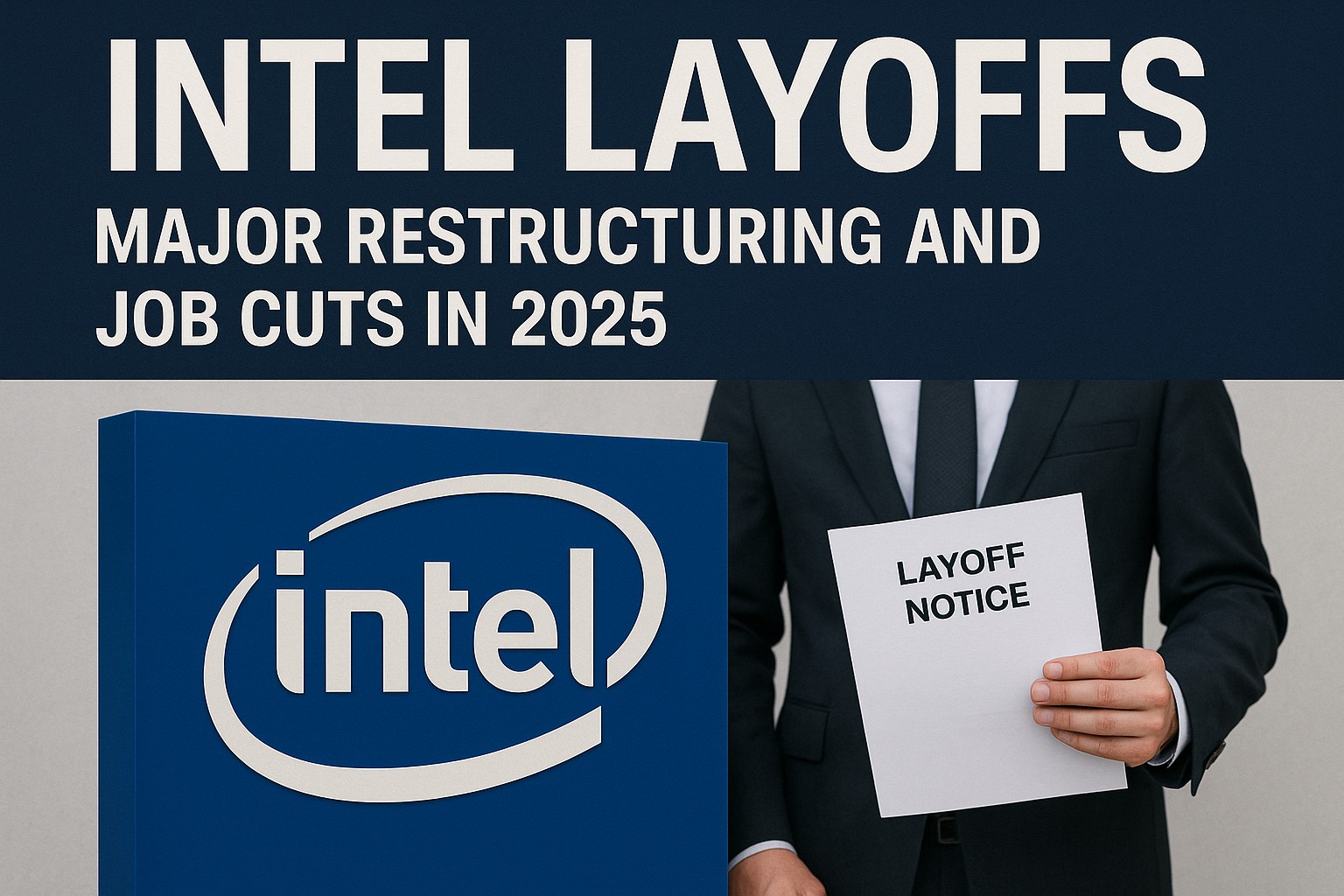Intel layoffs have become a hot topic as the company announces a major restructuring plan for July 2025, which will involve significant job cuts, the closure of key departments, and outsourcing of roles. The technology giant, known for its pivotal role in semiconductor manufacturing, is undergoing a transformation to streamline its operations amid a shifting market landscape.
1. Intel’s Restructuring Plan
Intel has revealed plans to shut down several departments as part of its major restructuring process. The company is also reducing its workforce, with approximately 20% of its staff expected to be laid off. These changes come as Intel seeks to focus on its core business operations while adjusting to the demands of an evolving tech market.
Intel’s restructuring aims to optimize its product lines and enhance its technological capabilities. The reduction in headcount and department closures are designed to increase operational efficiency, but they have also raised concerns regarding job security for employees in the affected units.
According to a report by The Economic Times, the restructuring efforts are a response to both internal challenges and increasing competition in the semiconductor industry, especially from companies like AMD and NVIDIA (Economic Times Article). As Intel faces mounting pressure to innovate and reduce costs, it is leaning on job cuts and outsourcing to maintain profitability.
2. Impact on Employees: Job Cuts and Department Closures
The job cuts began with 107 employees being let go in the company’s headquarters in the US. These layoffs are part of a broader move to shed underperforming units and refocus Intel’s strategy on high-priority areas. Sources from News18 report that the company is parting ways with workers in departments where automation and outsourcing will now play a more significant role (News18 Article).
Intel’s layoff policy includes severance packages for affected employees, but many are concerned about the long-term effects on the company’s culture and morale. The restructuring is expected to impact employees across several regions, with departments in sales, marketing, and product management being the most affected.
Despite these cuts, Intel is also committed to maintaining its leadership position in the semiconductor market. To achieve this, the company is increasing investment in AI technologies, cloud computing, and advanced manufacturing. However, this transition may leave many current employees searching for new opportunities.
3. Outsourcing and Role Reductions
Intel has also announced plans to outsource certain roles to third-party service providers in an attempt to reduce labor costs. This includes roles in customer support, manufacturing, and other back-office operations. By outsourcing these jobs, Intel aims to reduce overhead costs while concentrating its in-house resources on innovation and core competencies.
The outsourcing decision has raised concerns about job security, particularly for employees in support roles, as well as the potential quality control issues that may arise from moving operations outside the company. However, Intel has assured stakeholders that these moves are necessary for long-term growth and stability.
4. Market Response and the Future of Intel
The announcement of these job cuts and restructuring plans has sent ripples through the technology sector. Analysts are closely watching Intel’s ability to rebound from these changes and continue to innovate in an increasingly competitive market. Intel’s future lies in its ability to maintain its relevance in the semiconductor industry, and this restructuring is seen as a critical step in navigating these challenges (Intel Official Announcement).
For now, the company’s focus will be on aligning its resources with emerging opportunities in fields like 5G, cloud computing, and AI. Intel is positioning itself as a key player in these markets, but how well the company adapts to these shifts while managing internal changes remains to be seen.
Conclusion
Intel’s layoffs and restructuring efforts in 2025 signal a period of significant transformation for the company. While the job cuts and department closures may lead to short-term challenges for employees, the company’s focus on outsourcing and innovation could position it for long-term success. The evolving tech landscape requires flexibility, and Intel’s response to these pressures will shape its future direction.
Intel’s leadership must balance cost-cutting measures with investment in new technologies to stay competitive and maintain its foothold in the semiconductor industry.


